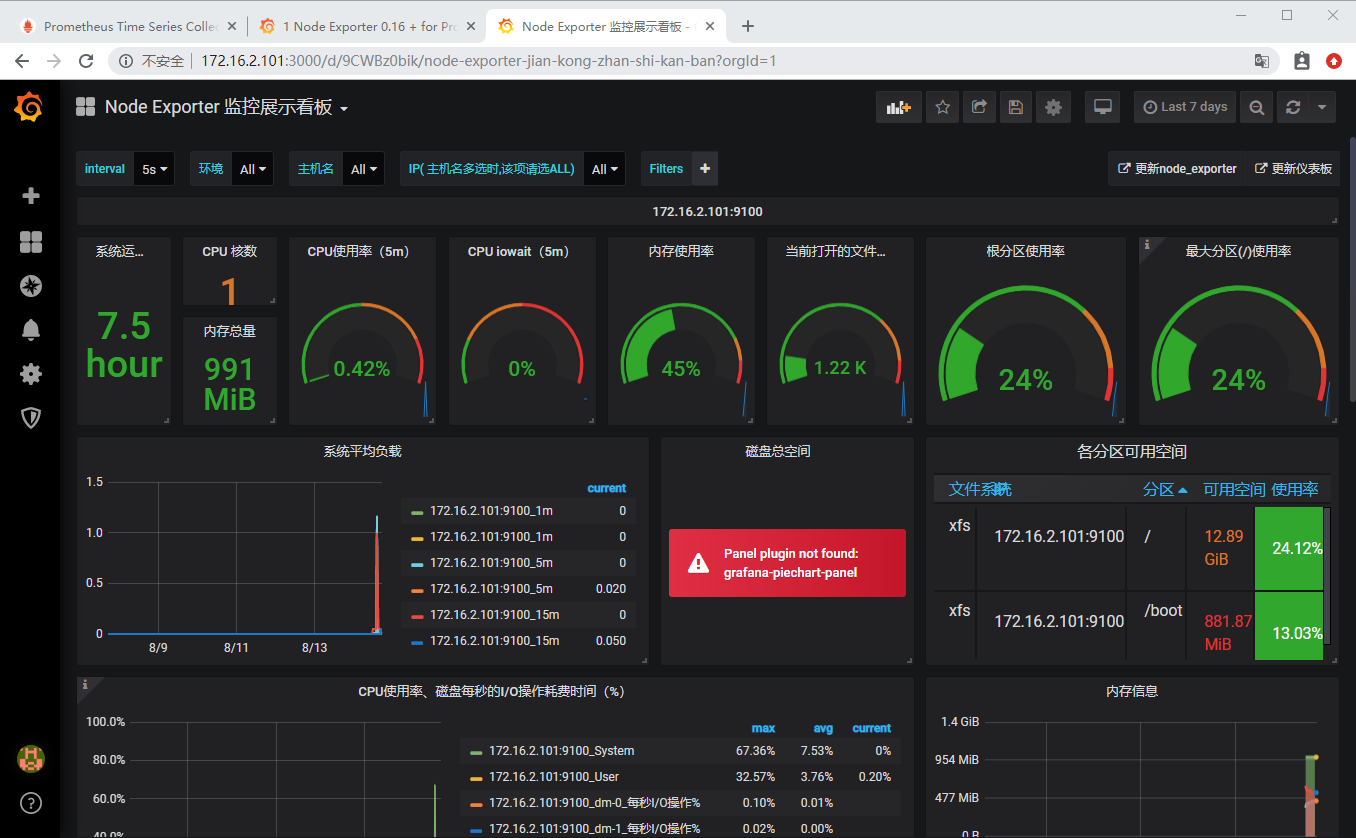

- #Mysql exporter for prometheus how to#
- #Mysql exporter for prometheus install#
- #Mysql exporter for prometheus manual#
- #Mysql exporter for prometheus password#
- #Mysql exporter for prometheus download#
Save the template by clicking Save Template in the top right corner.

In the dialog that appears, name the dashboard mysql-overview and choose MySQL template. Navigate to Custom Monitoring under Monitoring & Alerting and click Create. Note that your MySQL service may be created with a different name.Ĭlick Deploy and wait until MySQL exporter is up and running.Īfter about two minutes, you can create a monitoring dashboard for MySQL and visualize metrics in real time. Set mysql.host to mysql-a8xgvx, mysql.pass to testing, and user to root as below. In this tutorial, MySQL is installed with the service name mysql-a8xgvx. MySQL exporter needs to connect to the target MySQL.
#Mysql exporter for prometheus manual#
Those charts usually disable ServiceMonitor by default and require manual modification. The built-in MySQL exporter sets it to true by default, so you don’t have to manually modify serviceMonitor.enabled.ĭon’t forget to enable the ServiceMonitor CRD if you are using external exporter Helm charts. Make sure serviceMonitor.enabled is set to true. MySQL exporter is responsible for querying MySQL status and reports the data in Prometheus format. You need to deploy MySQL exporter in demo on the same cluster. Uncomment the mysqlRootPassword field and click Deploy. Make sure MySQL is deployed in demo and click Next. Go to the project demo and click App Store in the top left corner.
#Mysql exporter for prometheus password#
To begin with, you deploy MySQL from the App Store and set the root password to testing. In this tutorial, you log in as project-operator and work in the project demo in the workspace demo-workspace. The account needs to be a platform regular user and to be invited as the project operator with the operator role. For more information, see Create Workspaces, Projects, Accounts and Roles. You need to create a workspace, a project, and a user account for this tutorial.Supported MySQL versions: 5.1 and up, however not all collection methods are supported on MySQL < 5.6. MySQL and MySQL exporter will be deployed from the App Store. Prometheus exporter for MySQL server metrics. Please make sure you enable the OpenPitrix system.
#Mysql exporter for prometheus how to#
This tutorial walks you through an example of how to monitor MySQL metrics and visualize them. To expose MySQL metrics in Prometheus format, you need to deploy MySQL exporter instead. This allows you to test out changes without having to re-install.From the Introduction section, you know it is not feasible to instrument MySQL with Prometheus metrics directly. The exporter can be installed in "editable" mode, using pip's `-e` flag. If you don't want to mount the query config file in at run time, you could modify the Dockerfile to copy it in when building the image. For example, you could change where the query config file is read from using `-c`. You can change other options in the same way as `-s`. You will also need to use this to configure the MySQL server using `-s`. Any options placed after the image name (`prometheus-mysql-exporter`) will be passed to the process inside the container. To run a container successfully, you will need to mount a query config file to `/usr/src/app/exporter.cfg` and map container port 8080 to a port on the host. > sudo docker build -t prometheus-mysql-exporter. Run the following in the root project directory: You can build a docker image using the provided Dockerfile. See the provided `exporter.cfg` file for query configuration examples and explanation. Run with the `-h` flag to see details on all the available options. > prometheus-mysql-exporter -p -s -u -P -c -d MySQL is a popular opensource relational database system, which exposed a large number of metrics for monitoring but not in Prometheus format. You can set the database(s) and change any defaults as required by passing in options: There is no default database to run the queries on, so you must specify at least one. Once installed, you can run the exporter with the `prometheus-mysql-exporter` command.īy default, it will bind to port 8080, query MySQL on `localhost:3306` using the `root` user (with no password) and run queries configured in a file `exporter.cfg` in the working directory. Note that you may need to add the start script location (see pip output) to your `PATH`.
#Mysql exporter for prometheus download#
download dependencies, create start script):
#Mysql exporter for prometheus install#
Run the following in the root project directory to install (i.e. You will need Python 3, pip 3, and libmysqlclient-dev installed to run the exporter. This Prometheus exporter periodically runs configured queries against a MySQL database and exports the results as Prometheus gauge metrics.


 0 kommentar(er)
0 kommentar(er)
